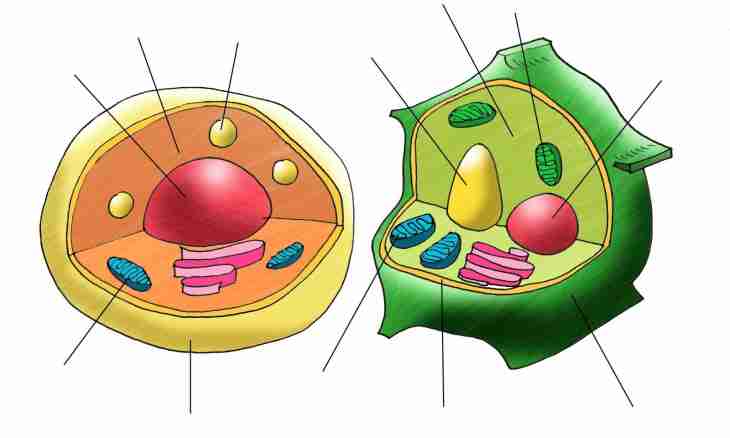Plant and animal cells have the general plan of the building. They consist of a membrane, cytoplasm, a kernel and various organelles. Processes of a cellular metabolism and energy, the chemical composition of cages, record of hereditary information are similar. At the same time, between plant and animal cells there are differences.
Instruction
1. The main difference of a plant cell from animal is the way of food. Plant cells are autotrophs, they are capable to synthesize the organic matter necessary for their activity, for this purpose they need only light. Animal cages are heterotrophs; necessary for them for substance life they receive with food. However, among animals also exceptions are observed. For example, green flagellates: in the afternoon they are capable to photosynthesis, but in the dark eat ready organic matter.
2. The plant cell, unlike animal, has a cellular wall and cannot thereof to change the form. The animal cage can stretch and change since there is no cellular wall.
3. Distinctions are observed also in a way of division: at division of a plant cell in it the partition is formed; the animal cage shares with formation of a banner.
4. Cages of plants comprise plastids: chlorolayers, leykoplasta, chromolayers. Cages of animals do not contain such plastids. By the way, exactly thanks to the plastids bearing in themselves a chlorophyll there is also a photosynthesis in plant cells.
5. In cages both plants, and animal there are vacuoles. But at plants it is small large cavities, and at animals numerous and small. Vacuoles of plants reserve nutrients whereas vacuoles of animals bear digestive and sokratitelny functions.
6. Synthesis of the adenosine triphosphoric acid necessary for obtaining energy, at plants happens in mitochondrions and plastids, at animals only in plastids.
7. All types of cages have a special appearance of spare carbohydrate. At plant cells it is starch, at animals - a glycogen. Starch and a glycogen differ on the chemical composition and the building.
8. The animal cage has centriol, the plant cell does not have them.
9. Nutrients of a plant cell are stored in the cellular juice filling vacuoles; nutrients of an animal cage are located in cytoplasm and have an appearance of cell inclusions.

